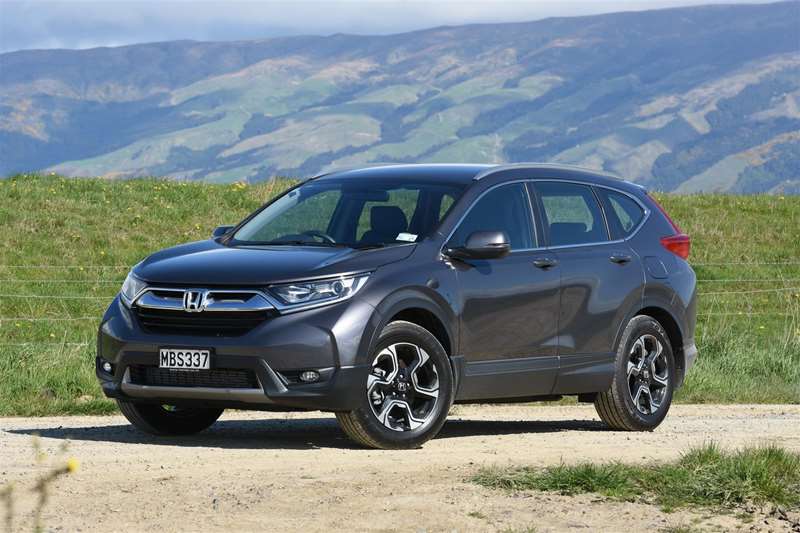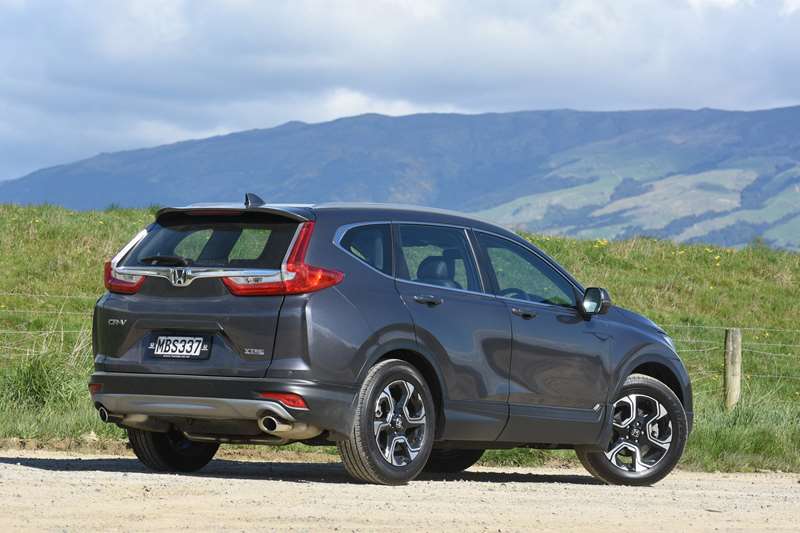Honda has added two new models to its CR-V range, writes David Thomson. But do they really add anything?
What’s new?
The evolution of the current Honda CR-V range demonstrates very clearly that the rocketing popularity of sports utility vehicles has far more to do with their everyday practicality than their go anywhere ability.
At launch, a couple of years back, that range comprised a pair of five-seat all-wheel-drives and two front-wheel-drive models — one with five seats, and the other a family-friendly seven-seater.
The CR-V line-up has now expanded to six models, with both additions front-wheel-drive only. One is a new seven-seater that brings the third row of seats into play with a sub-$40,000 price tag for the first time.
Priced at $39,990, and called the CR-V 2WD Limited 7, this model is the subject of this test. By way of comparison, the other seven-seater in the range, the 2WD Sports 7 is priced at $44,990.
What comes as standard?
Like most other CR-V models, the 2WD Limited 7 sits on 18-inch alloys and includes front fog lights, roof rails and a dual exhaust as standard exterior items.
Its other standard features include LED running lights, keyless entry and push button start, artificial leather upholstery, an eight-way power-adjustable driver’s seat, dual zone climate control, and cruise control. There’s a digital instrument cluster and a seven-inch centre-mounted touchscreen, which is home for the sound system, reversing camera and phone connectivity (including Apple Car Play and Android Auto synchronisation).
A step up to the Sports 7 is required to secure features such as auto lights, rain sensing wipers, satellite navigation and front and rear parking sensors. The Sports 7 also adds a power-operated tailgate, panorama sunroof, heated seats and paddle-shift gear controls.
Disappointingly, neither of Honda’s 7-seater CR-V models are equipped with the full suite of active safety equipment provided on the five-seater all-wheel-drive models.
So if you buy the Limited 7, the only active safety items you will get, in addition to an admittedly strong passive safety array, are a driver attention monitor and agile handling assistance (vehicle stability control). The Sports 7 adds a lane watch camera system. The items absent from these models but provided on the AWD CR-Vs include active radar cruise control, lane keeping assistance, lane departure warning, forward collision warning and collision mitigation braking systems.
What’s it like to look at?
The fifth-generation model has a similar visual profile to its predecessor. Yet, within an overall form that is largely familiar, the bodywork is much more contoured.
This change, and sharp crease lines along flank and bonnet, combine with wheels that are positioned closer to the vehicle’s extremities to provide a more contemporary and elegant look.
What’s it like inside?
Although the current CR-V is the longest model in wheelbase and overall length, provisioning a third row of seats is still an ambitious call. But Honda, as it has shown time and time again with the Jazz, is well-versed in efficient interior design.
Boot space starts at a tight 150 litres when all three seats are raised, rising to 472 litres when the rear seats are stowed and up to 967 litres when the middle row is folded flat.
Raised and lowered very simply via a pair of sturdy tags, the rear seats are designed with children in mind. Access is relatively easy, via the CR-V’s wider-opening rear doors, facilitated by a two-stage ‘‘fold and tilt forward’’ system for the middle row.
The middle seats are split 64:40 and are mounted on rails. Space suffers when they are positioned forward to allow reasonable legroom in the back, but when positioned as far aft as possible, there is ample legroom and decent headroom too. The middle seats have a pair of USB plugs, grab handles, LED reading lights and a flip-down centre armrest with cup holders.
Nicely trimmed with a soft touch dash, the front of the cabin is notable more for practicality than design flair.
Front seat occupants are separated by a deep and spacious centre storage bin incorporating a novel but practical removable tray. The centre bin includes dual USB, 12-volt and HDMI plug points with another 12-volt socket positioned ahead of the twin cupholders in a further storage tray. The door bins are generous, as is the glovebox.
The front seats sit quite high but there is still plenty of headroom, and this seating position combines with the CR-V’s relatively slim A-pillars and ample glass area to provide excellent visibility. Key controls are well-positioned, the centre instrument display is clear, the centre touchscreen scores well for clarity and ease of use, and device connectivity — wired or by Bluetooth — is easy.
What’s it like to drive?
Like every other CR-V, bar the entry-level model, the 2WD Limited 7 is powered by a 140kW/240Nm 1.5-litre turbocharged petrol engine that is paired to a seven-stage continuously variable (CVT) transmission.
An uprated version of the mainstay engine for the Civic range, the 1.5-turbo is refined at low to moderate throttle openings, including when cruising at highway speeds. It becomes a little raucous when working hard, which it must from time-to-time to keep the CR-V moving at a decent clip up steeper hills and when overtaking.
A CVT transmission that is far from leading edge does little to help the cause here; the best current CVTs on offer (including some from Honda) are hard to distinguish from conventional automatics, but the test car’s transmission exhibited some of that whiny rubber-band CVT character of a previous era.
This lack of mechanical sophistication is a shame because the CR-V is dynamically strong in other respects.
In particular, it delivers a very comfortable and cossetting ride. Wind and tyre roar are impressively contained, and it benefits from additional soundproofing, and active noise cancelling technology.
Razor sharp handling is an unlikely priority for anyone buying a vehicle of this type, which is just as well; while it is well mannered and grips quite well, if pushed through tight twists and turns, it is not especially nimble, nor communicative through the steering. On a more positive note, its Agile Handling Assist system differs from some I have experienced of late in that it does not intervene obviously or too early during press-on driving.
Verdict
Well-built, tidily styled and cleverly configured within the cabin, this relatively new addition to the CR-V range will appeal to those who want the flexibility of a seven-seat configuration in a vehicle that is neither overly large nor van-like.
However, while a dynamic balance that prioritises comfort over sporting finesse is appropriate for a vehicle of this type, the omission of the active safety systems available elsewhere in the CR-V range is odd in such a family-focused machine.
Photos: David Thomson












